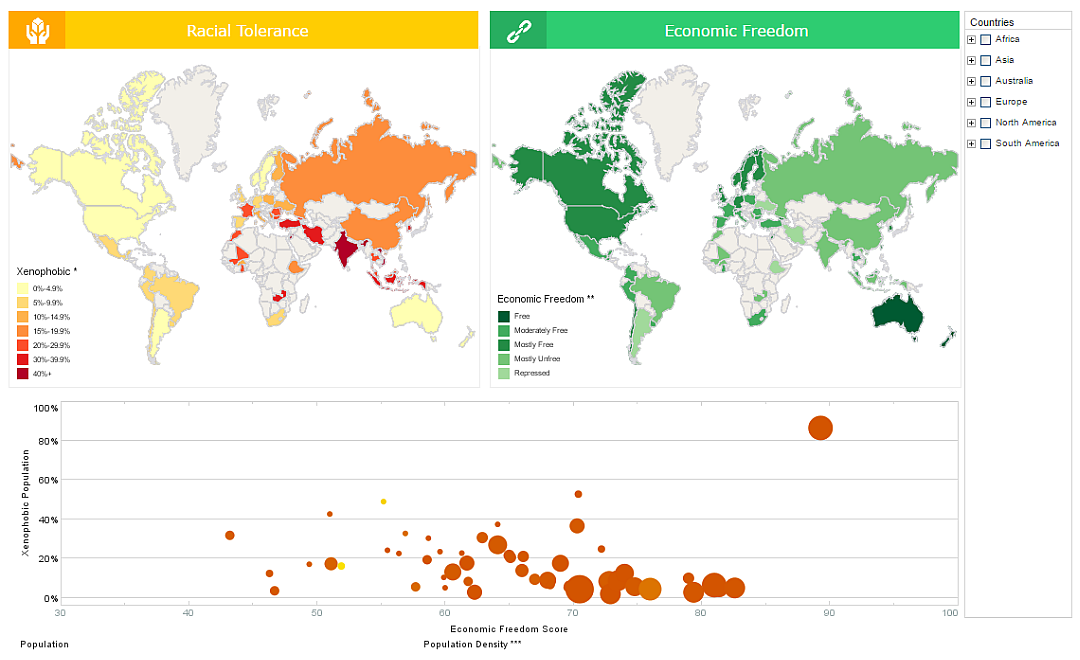The Definition of Enterprise Intelligence
This is the transcript of a Webinar hosted by InetSoft on the topic of "Enterprise Intelligence" The speaker is Jessica Little, Marketing Manager at InetSoft.
So let's, first of all, give the definition of enterprise intelligence and some related concepts. You may have seen many of these concepts before, as they have been around for many years. Corporate performance management, business intelligence and customer relationship management are all familiar terms to all of us. CPM and BI take raw data and turn it into actionable corporate information.
They create the ability to measure past performance. They deliver knowledge to the right people when and where it is needed, and keep in mind that timeliness is an issue. The issue is that not everybody needs all information, they need just the right information for themselves.
Customer relationship management has come roaring back over the past several years, and terms such as engagement, customer experience, satisfaction levels and how to build loyalty have become very important. These lead to cross-sell opportunities and increased wallet share opportunities which also enables improving service and achieves organic growth.
Structured and Unstructured Data
Data, of course, comes in structured and unstructured forms. Over the past several years, many financial institutions have come to understand the value of unstructured data. This is information that’s captured in call centers, in contacts with branches, in a person-to-person context where notes and key items are written down in a form that needs to be mined and used to serve customers better.
Information is really nothing more than data that has meaning to business users. It's something that’s justified true and believed. Knowledge management then is using knowledge to achieve organizational objectives. Every year, Tower Group takes a look at the top 10 business drivers, strategic responses and technology initiatives affecting each of its 14 different practices within financial services. What you are looking at now is actually a top 10 of the top 10, and you can see that many of them relate to enterprise intelligence as we will be talking about it.
Innovation in both products and business models and structures is certainly a key element that we need to keep in mind. Emerging client demands for new product functions and relevance to themselves is also important. One of the key areas there is that the reemergence of the concept of market of one has come roaring back into financial services or as a colleague of mine calls it “the economy of me.”
How Enterprise Intelligence Helps
If we look at the strategic responses to some of these business drivers in the marketplace, improved management and transparency on the risk side is critical to today’s financial institutions, especially in light of the mortgage and credit crunch that we have been experiencing in recent times. Product and function innovation, improving client experiences is certainly critical, and you can see some of the other elements that relate directly to enterprise intelligence.
On the technology front, one of the key areas that came out on top in every one of the 14 practices was the ability to mine client data and gain business intelligence. While most of the technology initiatives contribute directly to enterprise intelligence, client and business intelligence came out on top in everything that was looked at in most of the institutions that were talked to as they try to find ways to gain competitive advantage.
Dramatic Increase in Data
And this is all because there is a dramatic increase in data that’s occurring every single day in our businesses. Whether you open a new channel, whether you have a merger where old information now has to be assimilated in new ways into your business, whether you have created or gathered new information from customers or whether you put information together in different ways to understand your business better, the amount of data is growing exponentially on an annual basis.
If you look back, Tower Group estimated that about $34 billion was spent in managing information and data in the intelligence area. More importantly, about 75% of that was spent on an administrative basis, which means that it was human resources, and manual processes that were involved. You can see that in 2008, they are estimating somewhat over $39 billion will be spent.



